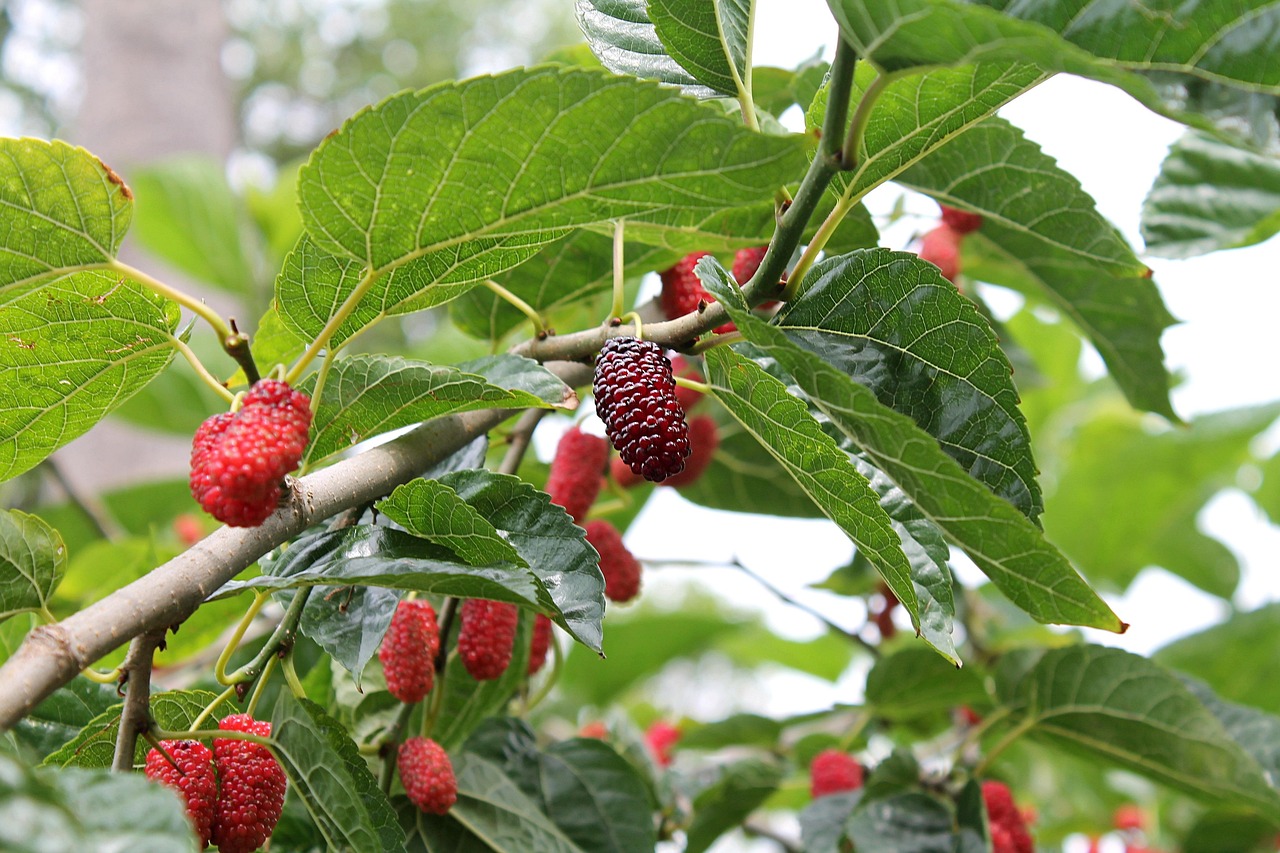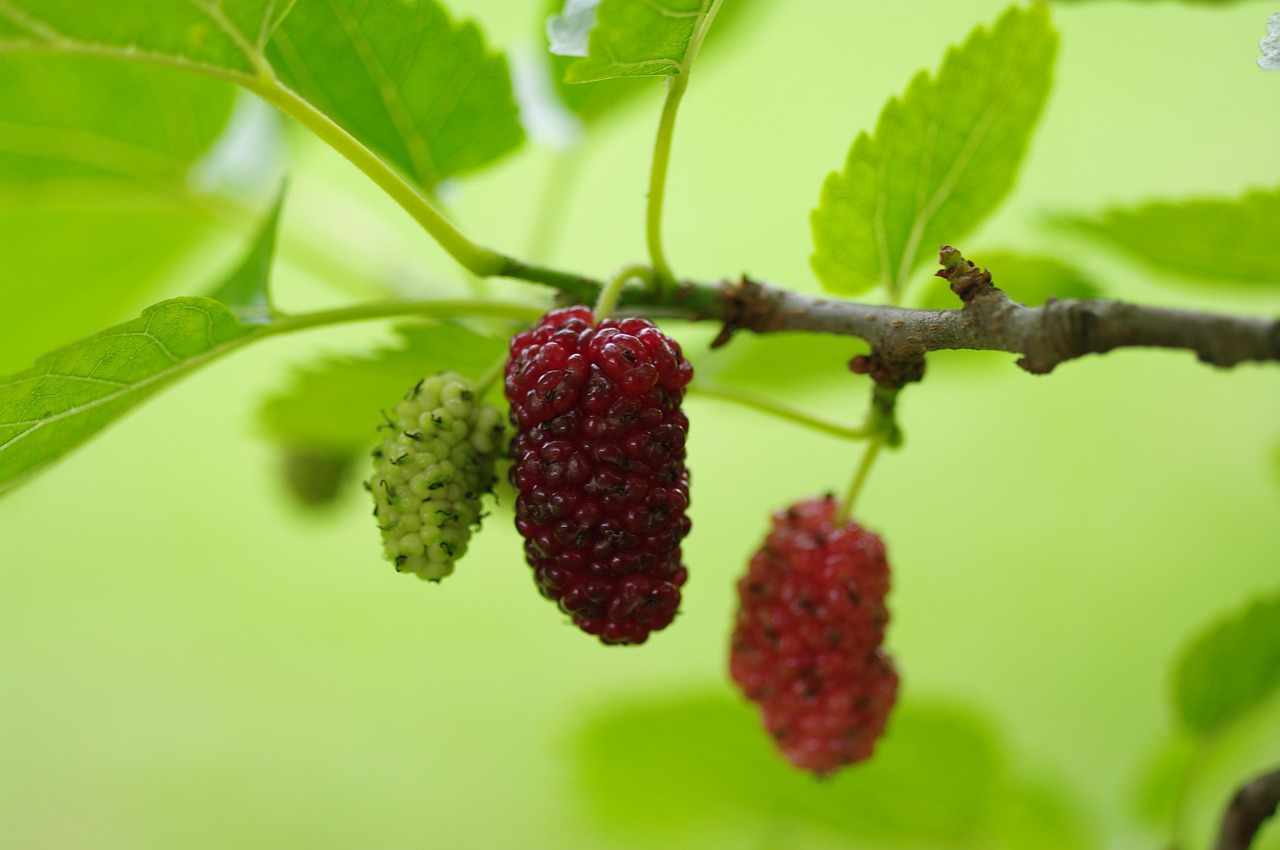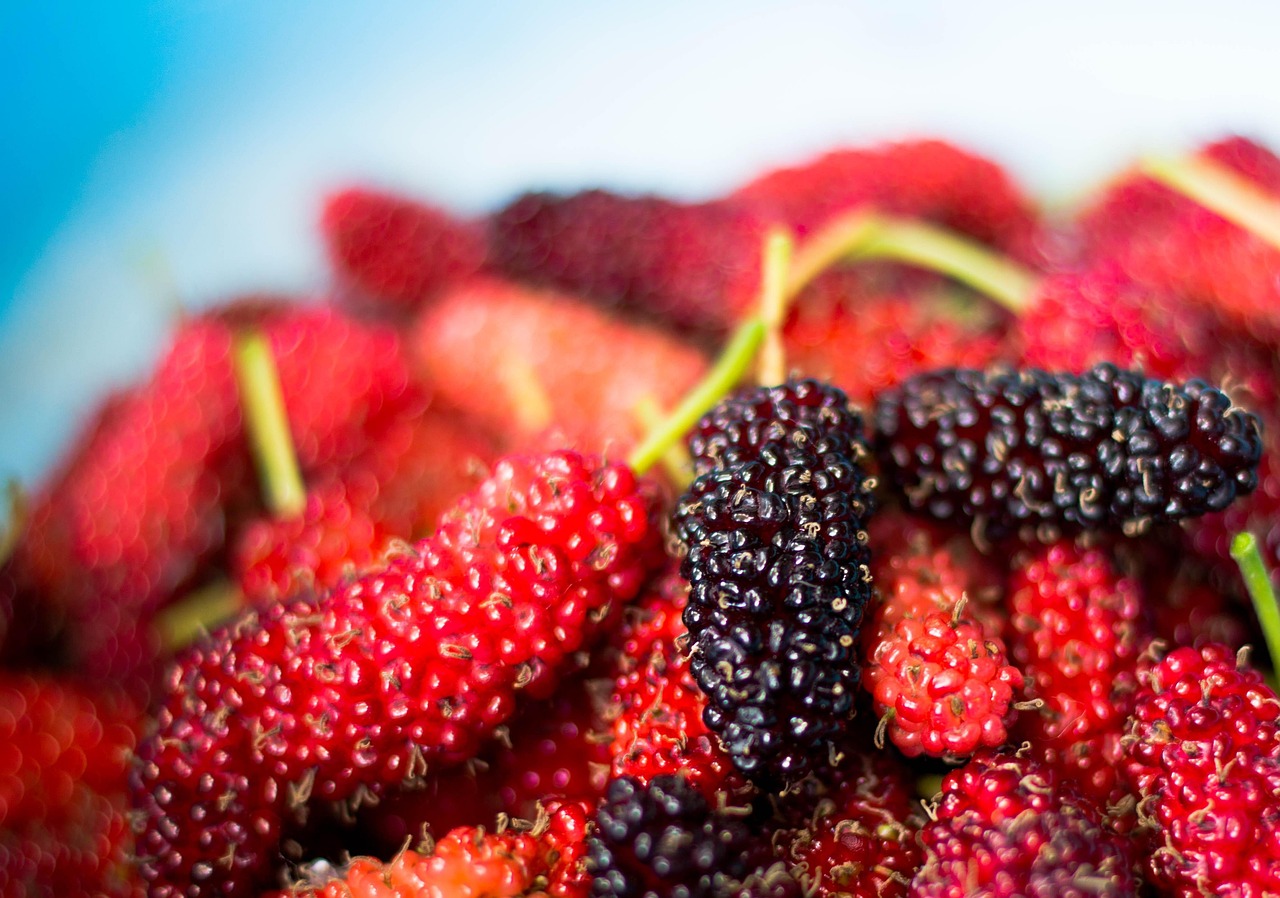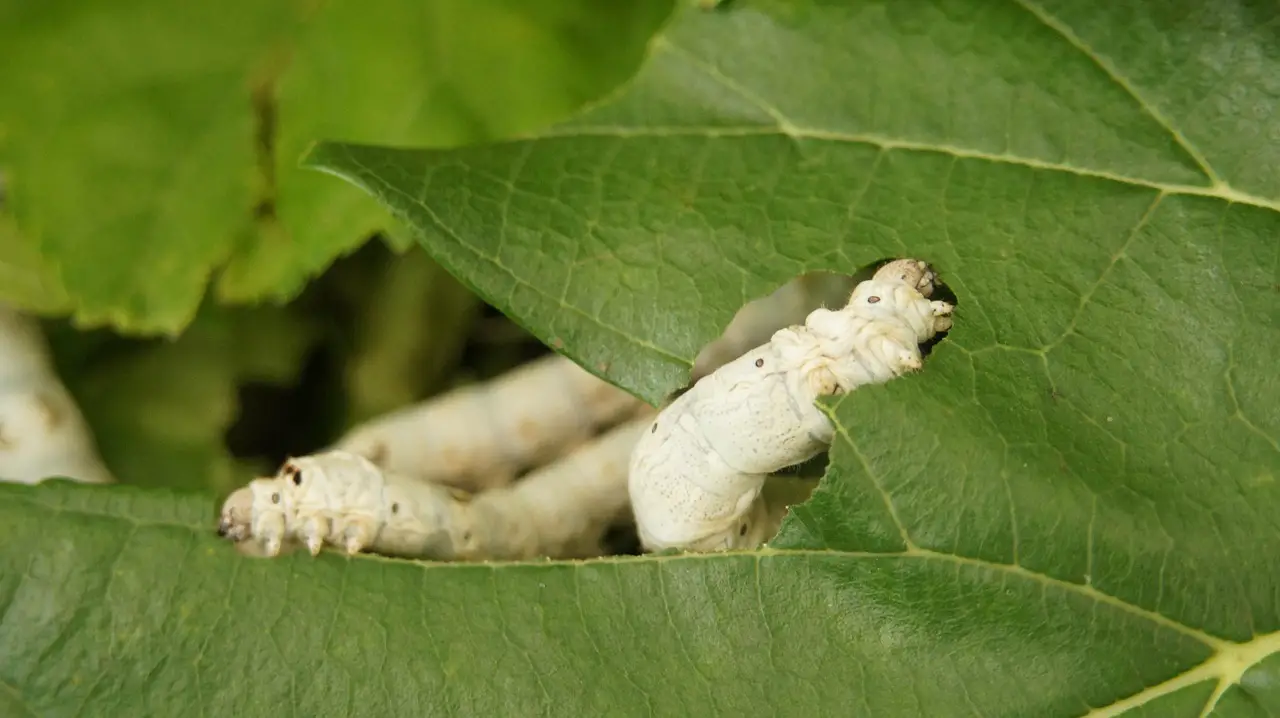Pruning mulberry trees is essential for promoting healthy growth and enhancing silk production. Proper pruning techniques ensure a robust canopy for shade while allowing sunlight to reach the lower branches, which can improve fruit yield and leaf quality.
Mulberry trees are a versatile addition to any garden or landscape. Known for their lush foliage and sweet fruits, they provide not only aesthetic appeal but also functional benefits. The leaves of the mulberry tree are the primary food source for silkworms, making them invaluable in silk production. Additionally, their expansive canopies offer excellent shade, making them popular in warmer climates.

Understanding how to prune these trees correctly can maximize their benefits. Pruning helps shape the tree, control its size, and encourage healthy growth. By removing dead or diseased branches, you can prevent pest infestations and promote better air circulation within the tree. This is especially important for mulberry trees, as they can grow quite large if left unpruned.
Benefits of Pruning Mulberry Trees
Pruning mulberry trees provides several advantages that contribute to their health and productivity. Here are some key benefits:
- Improved Silk Production: Regular pruning encourages new growth, which is essential for producing high-quality leaves vital for silkworms.
- Enhanced Airflow: Thinning out crowded branches improves airflow, reducing the risk of fungal diseases.
- Increased Sunlight Exposure: Properly pruned trees allow sunlight to reach all parts of the tree, promoting even growth and fruit production.
- Better Shape and Size Control: Pruning helps maintain a manageable size and shape for easier harvesting and maintenance.
- Removal of Diseased Wood: Cutting away sick branches helps prevent the spread of diseases within the tree.
When it comes to mulberry trees, timing is crucial. The best time to prune is during the dormant season, typically late winter or early spring before new growth begins. This timing allows the tree to heal quickly and promotes vigorous growth in the growing season.

The tools you use for pruning are also important. Sharp and clean pruning shears will make precise cuts that reduce injury to the tree. For larger branches, you may need a pruning saw. Always disinfect your tools before and after use to prevent the spread of diseases.
Pruning Techniques
There are various techniques to consider when pruning mulberry trees. Each method serves a specific purpose and can be tailored based on the tree’s age and health.
- Thinning: This technique involves removing select branches to increase light penetration and air circulation. It is beneficial for young trees to encourage a strong framework.
- Heading Back: Cutting back branches to a bud or lateral branch encourages bushier growth. This technique is often used to control size.
- Renewal Pruning: Ideal for older trees, this method involves cutting back older, unproductive branches to stimulate new growth.
Each of these techniques can be combined based on the specific needs of your mulberry tree. It may take some practice to master these methods, but the results will be worth the effort.

Pest Management During Pruning
Pests can pose a significant threat to the health of your mulberry tree. While pruning, it is essential to inspect the tree for signs of infestation. Common pests include aphids, spider mites, and caterpillars. Early detection allows for timely intervention, which can save your tree from severe damage.
| Pest | Signs of Infestation | Control Methods |
|---|---|---|
| Aphids | Sticky residue on leaves; curled leaves | Insecticidal soap; neem oil |
| Spider Mites | Webbing; yellowing leaves | Insecticidal soap; water sprays |
| Caterpillars | Eaten leaves; presence of droppings | Handpicking; organic insecticides |
After pruning, it is advisable to apply a balanced fertilizer to support new growth. Fertilizing provides essential nutrients that may have been depleted during the pruning process. However, avoid over-fertilization as it can lead to excessive vegetative growth at the expense of fruit production.
In conclusion, understanding the importance of pruning mulberry trees is vital for anyone looking to maximize their benefits. With proper techniques and timing, you can ensure your mulberry trees thrive while providing shade and sustenance for silkworms.

Choosing the Right Time to Prune
Timing is critical when it comes to pruning mulberry trees. The effectiveness of your pruning efforts can significantly depend on when you choose to perform them. Understanding the growth cycles of mulberry trees will help you determine the best times for pruning.
Generally, the ideal time to prune mulberry trees is during the dormant season. This is typically late winter or early spring, just before new growth begins. Pruning at this time minimizes stress on the tree and allows it to focus its energy on healing and producing new leaves and fruit during the growing season.
Here are some key considerations regarding timing:
- Winter Dormancy: Trees are less susceptible to stress and damage during their dormant phase. Pruning at this time encourages healthy new growth in spring.
- Post-Harvest: For those growing mulberries for their fruit, pruning can also be done after harvesting to shape the tree for the next growing season.
- Avoid Late Summer Pruning: Pruning in late summer can lead to new growth that may not harden off before winter, increasing the risk of damage from cold temperatures.
Understanding Growth Patterns
Mulberry trees exhibit distinct growth patterns through the seasons. Understanding these patterns can help you tailor your pruning strategy effectively. Typically, mulberries have a vigorous growth phase in spring and early summer, followed by slower growth in late summer and fall.
During the active growth phase, branches can grow rapidly, making it essential to monitor their development closely. If you notice overcrowding or any branches crossing each other, it’s a good idea to address these issues promptly. This will help in maintaining a healthy structure for the tree.
Tools and Equipment for Pruning
Having the right tools is essential for effective pruning. The tools you choose can make a significant difference in the quality of your cuts and ultimately affect the health of your tree. Here are some recommended tools:
- Bypass Pruners: Ideal for smaller branches, these shears make clean cuts that promote healing.
- Pruning Saw: Necessary for larger branches that cannot be cut with hand pruners. A sharp saw will ensure smooth cuts without tearing the bark.
- Loppers: Useful for reaching higher branches or thicker limbs that are too large for pruners but manageable by hand.
- Gloves: Protect your hands from cuts and scrapes while working with tools and branches.
- Disinfectant: A solution or wipes for cleaning your tools before and after use to prevent disease transmission.
Before starting any pruning task, ensure that all tools are clean and sharp. Dull tools can cause jagged cuts that may not heal properly, leading to increased susceptibility to disease.
Pruning Mulberry Trees Step-by-Step
The process of pruning mulberry trees can be broken down into several steps. Following a systematic approach ensures that you achieve the desired results without damaging the tree.
- Assess the Tree: Begin by examining the overall health of the tree. Look for any dead, diseased, or damaged branches.
- Select Branches to Remove: Choose branches that are crossing, crowded, or growing inward toward the center of the tree.
- Make Clean Cuts: Use your bypass pruners or saw to make clean cuts just above a bud or lateral branch. This encourages healthy growth.
- Remove Suckers: Suckers are fast-growing shoots that emerge from the base or roots of the tree. These should be removed to redirect energy toward healthier growth.
- Step Back and Reassess: Periodically step back to evaluate your work. Ensure you are maintaining a balanced shape and not over-pruning one side of the tree.
This step-by-step method will guide you through the pruning process effectively, ensuring that you maintain a healthy and productive mulberry tree.
Common Mistakes in Pruning
<pEven experienced gardeners can make mistakes when pruning mulberry trees. Awareness of common errors can help you avoid them and ensure a healthier tree.
- Over-Pruning: Removing too many branches can stress the tree and reduce its overall vigor. Always prune conservatively.
- Ignoring Tree Structure: Neglecting the natural shape of the tree can lead to an unattractive appearance and poor air circulation.
- Pruning at the Wrong Time: As mentioned earlier, timing is crucial. Pruning during the wrong season can lead to damage and reduced fruit yield.
- Poor Cuts: Making jagged or improper cuts can hinder healing and invite pests and diseases into the tree.
Avoiding these common mistakes will help ensure that your mulberry trees remain healthy and productive for years to come.
By understanding the best practices for timing, tools, techniques, and potential pitfalls in pruning, you can help your mulberry trees thrive while enhancing their benefits in silk production and shade provision.
Mulberry Tree Varieties and Their Pruning Needs
Understanding the different varieties of mulberry trees is crucial for effective pruning. Each variety may have unique growth habits, fruiting characteristics, and specific needs regarding pruning techniques. Here are some common types of mulberry trees:
- Red Mulberry (Morus rubra): Native to North America, this variety produces sweet, dark purple fruits. It can grow quite tall and benefits from routine pruning to maintain its shape and manage height.
- White Mulberry (Morus alba): Originally from Asia, this tree is often used for silk production due to its leaves being the preferred food for silkworms. Pruning helps control its size and encourages leafy growth.
- Black Mulberry (Morus nigra): Known for its rich flavor, this variety requires careful pruning to promote fruit production without compromising the tree’s health.
Each type of mulberry tree has slightly different pruning requirements based on its growth patterns and environmental adaptations. Understanding these differences will help you tailor your approach and achieve the best results.
Growth Habits and Pruning Techniques
The growth habits of mulberry trees can dictate how and when you should prune them. Here are some general guidelines based on their growth patterns:
- Young Trees: For young mulberry trees, focus on establishing a strong structure. Thin out any crowded branches and select a central leader to encourage upward growth.
- Mature Trees: For mature trees, regular maintenance pruning is essential. Remove any dead or diseased wood and thin out branches to improve air circulation. This can be done every few years to maintain tree health.
- Fruit-Bearing Trees: When pruning fruit-bearing mulberries, aim to promote new growth while removing older, unproductive branches. This will enhance fruit production in the following season.
By aligning your pruning techniques with the growth stage of your mulberry tree, you can improve its overall health and productivity.
How to Encourage Healthy Growth After Pruning
After pruning, it’s essential to take steps to encourage healthy growth and recovery. Proper post-pruning care can significantly impact the tree’s vitality and productivity.
Here are some strategies to consider:
- Watering: Ensure your mulberry tree receives adequate water after pruning. This helps reduce stress and supports new growth. However, avoid overwatering, as this can lead to root rot.
- Fertilization: Applying a balanced fertilizer after pruning can provide the necessary nutrients for recovery. Look for fertilizers that are high in nitrogen to support leaf development.
- Mulching: Adding a layer of organic mulch around the base of the tree can help retain moisture and suppress weeds. This creates a healthier environment for your mulberry tree.
- Pest Monitoring: After pruning, stay vigilant for any signs of pests or diseases. Early detection is key to preventing infestations that can hinder growth.
The Role of Soil Health
The health of the soil in which your mulberry tree grows plays a significant role in its overall well-being. Healthy soil contributes vital nutrients that support growth and resilience against pests and diseases. Consider the following factors for maintaining soil health:
- Soil Composition: A well-draining soil rich in organic matter is ideal for mulberry trees. Conduct a soil test to determine nutrient levels and pH balance.
- Regular Amendments: Incorporating compost or well-rotted manure into the soil can improve nutrient content and structure over time.
- Avoiding Compaction: Minimize foot traffic around the root zone to prevent soil compaction, which can restrict root growth and water absorption.
Pest Management Strategies Post-Pruning
Post-pruning is an important time to focus on pest management. After the stress of pruning, trees may be more vulnerable to pest infestations. Implementing effective pest management strategies can help protect your mulberry trees.
Here are several strategies to consider:
- Cultural Practices: Maintain good hygiene in your garden by removing fallen leaves and debris that can harbor pests.
- Beneficial Insects: Encourage beneficial insects like ladybugs and lacewings that prey on common pests such as aphids.
- Naturally Derived Insecticides: Use insecticidal soaps or neem oil treatments as needed. These products are less harmful to beneficial insects while effectively targeting pests.
- Physical Barriers: Installing row covers or netting can protect young trees from pests while allowing sunlight and moisture to reach them.
The Importance of Regular Monitoring
Regular monitoring of your mulberry trees after pruning is essential for ensuring their health. Check for any signs of stress, disease, or pest activity. Keeping a gardening journal can help track changes in your tree’s health over time, making it easier to identify issues before they escalate.
By being proactive in your care and monitoring efforts, you can significantly enhance the resilience of your mulberry trees, enabling them to thrive while producing high-quality silk and providing ample shade.
The combination of effective pruning techniques, proper care post-pruning, pest management strategies, and regular monitoring will ensure that your mulberry trees remain robust and productive for many seasons to come.
Additional Considerations for Mulberry Tree Care
Beyond pruning, there are several additional factors to consider when caring for your mulberry trees. These considerations can help enhance their growth, improve silk production, and ensure a thriving environment.
Environmental Factors
The environment plays a significant role in the health of mulberry trees. Here are some environmental considerations:
- Sunlight: Mulberry trees thrive in full sun. Ensure they receive at least six hours of direct sunlight daily for optimal growth and fruit production.
- Soil Quality: Regularly assess and improve soil quality. Mulberries prefer well-draining soils with a pH between 6.0 and 7.5. Soil amendments may be necessary to achieve the right balance.
- Climate Conditions: Mulberry trees are adaptable but perform best in temperate climates. Be mindful of extreme weather conditions, such as heavy winds or frost, which can damage young trees.
Watering Practices
Proper watering practices are crucial for the health of mulberry trees. Here are some tips:
- Deep Watering: When watering, ensure deep penetration to encourage deep root growth. This promotes drought resistance.
- Avoid Overwatering: While mulberries need consistent moisture, overwatering can lead to root rot. Check the soil moisture before watering.
- Drip Irrigation: Consider installing a drip irrigation system for efficient watering that targets the root zone without wetting the foliage.
Pest and Disease Prevention Strategies
In addition to monitoring and management strategies, prevention is key to keeping your mulberry trees healthy. Consider these preventive measures:
- Crop Rotation: If planting other crops nearby, practice crop rotation to disrupt pest life cycles and reduce disease pressure.
- Healthy Planting Practices: Choose disease-resistant varieties and ensure proper spacing to promote good air circulation around the trees.
- Regular Inspections: Conduct regular inspections of both leaves and soil to detect early signs of pests or diseases.
Final Thoughts
Pruning mulberry trees is a vital practice that not only enhances their beauty but also maximizes their productivity in silk production and shade provision. By understanding the unique needs of each variety and employing effective pruning techniques, gardeners can cultivate vibrant and fruitful trees.
The importance of proper timing, tool selection, and post-pruning care cannot be overstated. These factors contribute significantly to the tree’s ability to recover and thrive after being pruned. In addition, maintaining soil health, effective watering practices, and proactive pest management are essential for ensuring the long-term success of your mulberry trees.
Regular monitoring and responsiveness to any issues that arise will allow you to adapt your care strategies as needed. The culmination of these practices will lead to healthy, productive mulberry trees that provide both silk and shade for many years to come.
Embracing a holistic approach to mulberry tree care not only benefits the trees themselves but also enriches the overall garden ecosystem, promoting biodiversity and sustainability within your landscape. With dedication and attention, you can enjoy the myriad rewards that come from nurturing these remarkable trees.
